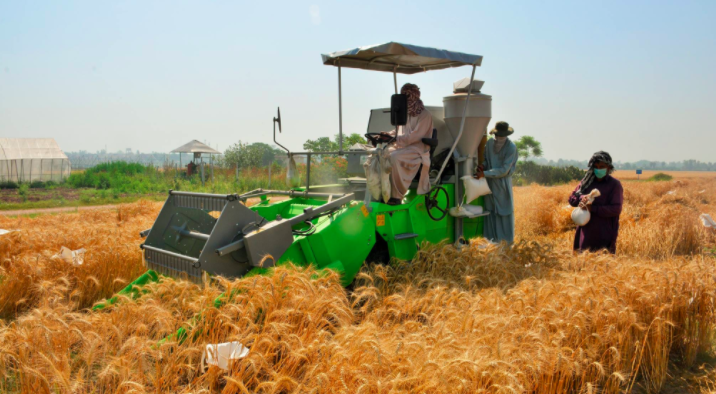Speeches Shim

The United States Agency for International Development (USAID) is partnering with the Government of Pakistan at both the federal and provincial levels to improve the lives of the people of Punjab.
HIGHLIGHT
Punjab is home to more than half of the country’s total population, and the largest number of youth in the country. The province contributes 55 percent to the national income, employs 61 percent of the national workforce, exports 51 percent of the national exports, and produces more than 70 percent of Pakistan’s annual grain production. Simultaneously, Punjab faces low literacy, unemployment, extremism, and low per-capita income. To address these issues – particularly in South Punjab – USAID is providing support in the agriculture, economic growth, education, health, governance, and energy sectors. USAID programming promotes the inclusion of women, youth, and underserved segments of the society. In addition to benefiting from programs that work exclusively in Punjab, provincial communities also benefit from USAID programs implemented on a national scale.
ECONOMIC GROWTH AND AGRICULTURE
USAID initiatives, in partnership with the private sector, promote growth in sustainable economic development activities by increasing incomes and employment and creating rewarding business opportunities, especially for women and youth. USAID supports the dairy, livestock, and horticulture subsectors of agriculture, and increases farmers’ access to innovative and affordable technologies. USAID is supporting the Punjab Government’s efforts to meet its objective of seven percent annual growth in provincial GDP, leading to the creation of employment opportunities by mobilizing private sector investment, improving small- and medium-enterprise competitiveness, and supporting policy reforms.
EDUCATION
Access to quality education supports economic growth, stability, and development, but remains a significant challenge in Punjab, especially for women and girls from disadvantaged backgrounds. Responding to this challenge, USAID is partnering with 10 universities in Punjab to increase access to and improve the quality of education. For example, USAID provides scholarships to talented but disadvantaged students and helps universities improve their ability to manage financial aid programs. Out of the 5,300 scholarships awarded countrywide, more than 2,100 have been awarded to students in Punjab.
HEALTH
According to the Pakistan Demographic and Health Survey, deaths of children under five years old in Punjab decreased by 20 percent (from 105 deaths per 1,000 live births in 2007 to 85 deaths per 1,000 live births in 2018). Compared to other provinces, Punjab has the lowest chronic malnutrition rate (30 percent vs. national average of 38 percent in 2018) and highest basic immunization coverage (80 percent vs. national average of 66 percent in 2018) among children under two years old. However, Punjab has a significant burden of infectious diseases. For example, the province accounts for over half of all tuberculosis cases in Pakistan. USAID is partnering with the Government of Punjab to prevent, detect and respond to infectious diseases, including collaboration with the Punjab Health Department in its COVID-19 response.
ENERGY
With a growing population, the availability of affordable, reliable energy remains a critical challenge for the province. Provision of reasonably priced and consistent supply of energy is the constraint to private sector investment and growth. To support economic growth, the Punjab Government is exploring opportunities in renewable sources of energy, off-grid solutions, and improving the distribution network. USAID supports energy distribution companies with improving their smart metering infrastructure, improving distribution networks, and promoting off-grid initiatives.
RESILIENCE
Current economic growth rates in Pakistan are insufficient for the economy to absorb the one million young people seeking entry into the workforce each year. In response, USAID is improving the economic and social conditions for youth and marginalized communities through skills training and micro-grants. USAID has provided vocational skill training, employment, and entrepreneurship opportunities to 10,000 youth, of which 45 percent women, in four districts of South Punjab. USAID is also supporting activities to strengthen civil society organizations, increase social tolerance, improve governance and engage youth, to foster a secure, peaceful, and prosperous Punjab.
HUMANITARIAN ASSISTANCE
Nearly three million people are affected by disasters in the country every year, with 67 percent of those impacted being residents of Punjab. USAID programs mitigate the social and economic impact resulting from disasters by supporting rescue, relief, and recovery operations, as well as disaster response preparedness and risk mitigation. Partnering with five other international donors, USAID has helped set up eight humanitarian response facilities around the country, including two in Punjab located in Lahore and Muzaffargarh.

Comment
Make a general inquiry or suggest an improvement.